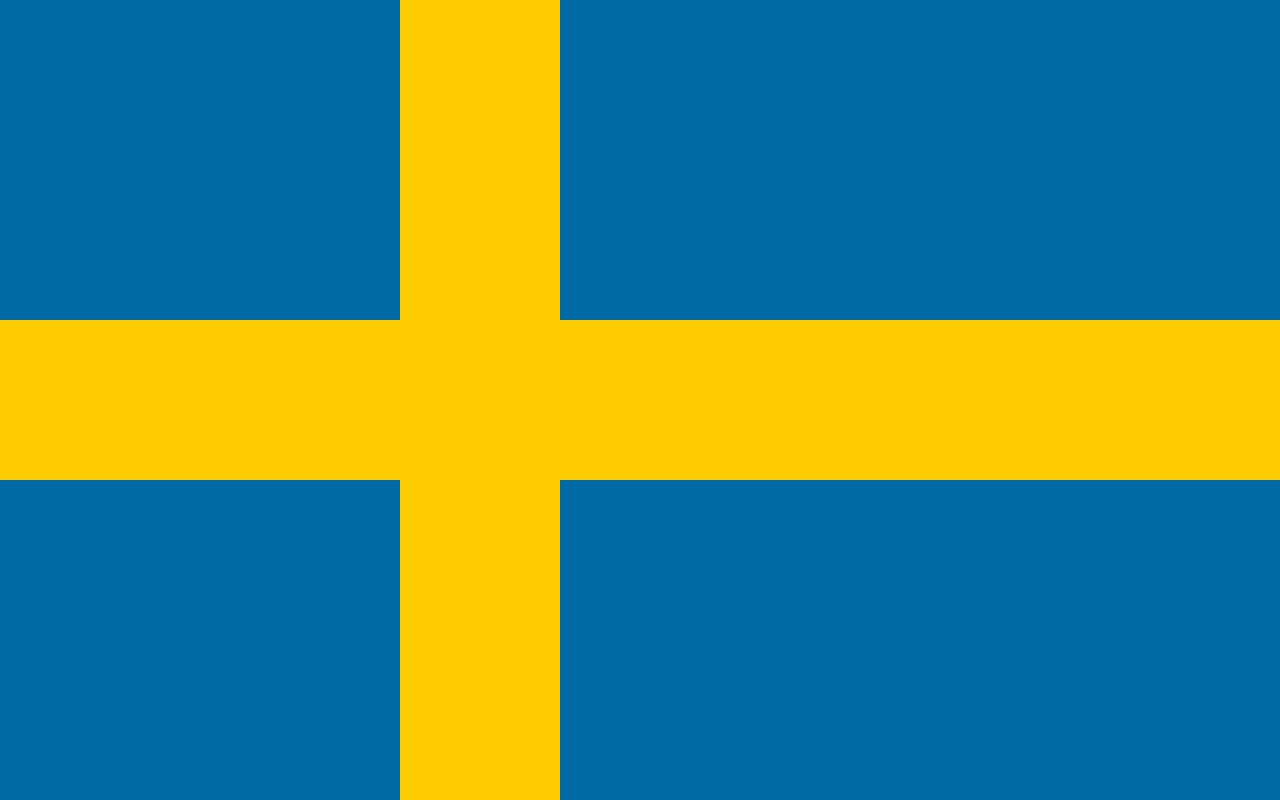Historical Evolution:
The origins and development of the Swedish flag are intricately linked with the nation's dynamic history:
- Medieval Genesis: Although the precise inception of the Swedish flag remains veiled in historical ambiguity, its emergence is traced back to the late Middle Ages, approximately during the 16th century. Notably, this period aligns with Gustav Vasa's era, a pivotal figure renowned for leading Sweden's quest for independence from Danish dominion. Gustav Vasa is revered as the architect of contemporary Sweden.
- Kalmar Union Influence: The flag's design showcases the imprint of the Kalmar Union, a historical compact that united Sweden, Denmark, and Norway from the late 14th to early 16th centuries. Embedded within the Swedish flag is the Scandinavian cross, emblematic of this interwoven historical connection.
- Hues and Tints: The chromatic spectrum of blue and gold/yellow on the flag has undergone metamorphosis over epochs. The precise Pantone shades designated for the Swedish flag, specifically PMS 301 (blue) and PMS 116 (yellow), have been codified to ensure uniformity in the flag's presentation.
Intrinsic Design and Symbolism:
The Swedish flag's design radiates with profound symbolism, narrating a story of heritage and identity:
- Off-Centered Cruciform: The positioning of the cross slightly askew towards the hoist is an inimitable trait of the Swedish flag. This design quirk bestows the flag with a distinctive aesthetic allure, setting it apart from its Scandinavian counterparts where centered crosses prevail.
- Azure Expanse: The vivid blue hue of the flag encompasses a poetic representation of Sweden's expansive skies, limpid waterways, and its picturesque natural vistas. This chromatic choice reverberates with Sweden's intimate bond with its environment, evoking the nation's multitude of lakes and the enveloping Baltic Sea.
- Aureate Cross: The golden or yellow Scandinavian cross reverberates with the echelons of Sweden's cultural and historical legacy. It also serves as a testament to the omnipresence of Christianity in molding the nation's ethos, reflecting the intricate interplay of spirituality and identity.
Cultural Significance:
The Swedish flag is interwoven into the very fabric of Swedish society, resonating deeply with its culture and daily existence:
- National Emblem: As a unifying emblem, the flag pulsates with the essence of national unity, nurturing a shared consciousness of identity and pride amidst the Swedish populace. It unifies diverse strata of society under a common historical tapestry, ethical values, and time-honored traditions.
- Celebratory Banners: The flag unfurls prominently during pivotal national holidays and festivities. On occasions such as National Day (June 6th), the flag takes center stage, unfurling to commemorate Sweden's heritage and strides.
- Midsummer Revelries: Amidst the tapestry of Swedish traditions, Midsummer shines resplendent. The flag soars in tandem with joyous celebrations encompassing dance, song, and feasting.
- Sportsmanship and Spirit: With spirited enthusiasm, the flag unfurls its vibrant hues during global sporting spectacles, resonating with ardor and allegiance for Swedish athletes and teams.
- Educational Emblem: The flag dons an educational mantle, gracing classrooms and pedagogic spaces. It serves as an instrument to enlighten the younger generation about symbols, historical legacies, and civic responsibilities.
Flag Etiquette:
Swedes conscientiously uphold protocols when exhibiting the flag:
- Raising and Lowering Rituals: As the sun ascends and descends, the flag unfurls at dawn and is reverently lowered at dusk. When illuminated, it can grace the nocturnal canvas.
- Half-Mast Gesture: To symbolize grief or veneration during national tragedies or the demise of notable figures, the flag may be lowered to half-staff.
- Dignified Handling: The flag is handled with reverence, never to touch the ground, ensuring it remains unsullied by unworthy demeanors.
In summation, the Swedish flag emerges as an indomitable, enduring emblem embodying the continuum of Sweden's historical journey, cultural resplendence, and unwavering national pride. Its chromatic palette and design epitomize Sweden's symbiotic link with nature, its pivotal role in the Scandinavian panorama, and the moral ethos permeating its societal ethos across eras.
Last Updated on: August 18, 2025
